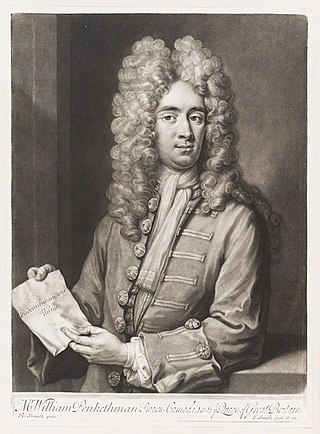See also
- Georgian Theatre Royal, a theatre and historic playhouse in Richmond, North Yorkshire, England
- Richmond Theatre fire
Richmond Theatre may refer to:

Surrey is a ceremonial county in South East England and one of the home counties. It is bordered by Greater London to the northeast, Kent to the east, East and West Sussex to the south, and Hampshire and Berkshire to the west. The largest settlement is Woking.
Richmond most often refers to:
Blackheath may refer to:

The Royal Borough of Kingston upon Thames is a borough in southwest London. The main town is Kingston upon Thames and it includes Chessington, Malden Rushett, New Malden, Surbiton and Tolworth. It is the oldest of the four royal boroughs in England. The others are Windsor and Maidenhead, the site of Windsor Castle, and the London boroughs of Greenwich, and Kensington and Chelsea. The local authority is Kingston upon Thames London Borough Council.

The London Borough of Richmond upon Thames in southwest London, England, forms part of Outer London and is the only London borough on both sides of the River Thames. It was created in 1965 when three smaller council areas amalgamated under the London Government Act 1963. It is governed by Richmond upon Thames London Borough Council and is divided into nineteen wards. The population is 198,019 and the major settlements are Barnes, East Sheen, Mortlake, Kew, Richmond, Twickenham, Teddington and Hampton.
Richmond is a town in south-west London, 8.2 miles (13.2 km) west-southwest of Charing Cross. It stands on the River Thames, and features many parks and open spaces, including Richmond Park, and many protected conservation areas, which include much of Richmond Hill. A specific Act of Parliament protects the scenic view of the River Thames from Richmond.

South London is the southern part of London, England, south of the River Thames. The region consists of the boroughs, in whole or in part, of Bexley, Bromley, Croydon, Greenwich, Kingston, Lambeth, Lewisham, Merton, Richmond, Southwark, Sutton and Wandsworth.
Kingswood may refer to:

Virginia Water is a commuter village in the Borough of Runnymede in northern Surrey, England. It is home to the Wentworth Estate and the Wentworth Club. The area has much woodland and occupies a large minority of the Runnymede district. Its name is shared with the lake on its western boundary within Windsor Great Park. Virginia Water has excellent transport links with London–Trumps Green and Thorpe Green touch the M3, Thorpe touches the M25, and Heathrow Airport is 7 miles (11 km) northeast.
West End most commonly refers to:

Longcross railway station is next to Longcross Garden Village in Surrey, England. It straddles the former parishes of Virginia Water and Lyne and Longcross in part of the large wooded sandy heath known as Surrey Heath, larger than the district of the same name. It is 25 miles 11 chains (40.5 km) down the line from London Waterloo and is served as a minor stop by South Western Railway on the Waterloo–Reading line.

The Municipal Borough of Richmond or Richmond Municipal Borough was a municipal borough in Surrey, England from 1890 to 1965.

The Bread-Winner (1930) is William Somerset Maugham's third-last play. It is a comedy in one continuous act, lasting about 2 hours, but with the curtain lowered twice to rest the audience.

St Mary Magdalene, Richmond, in the Anglican Diocese of Southwark, is a Grade II* listed parish church on Paradise Road, Richmond, London. The church, dedicated to Jesus' companion Mary Magdalene, was built in the early 16th century but has been greatly altered so that, apart from the tower, the visible parts of the church date from the 18th, 19th and early 20th centuries.

The Museum of Richmond in the London Borough of Richmond upon Thames is located in Richmond's Old Town Hall, close to Richmond Bridge. It was formally opened by Queen Elizabeth II on 28 October 1988.

William Pinkethman was an English comic actor, a low comedian with a droll style, and theatre manager. He was considered an imitator of Anthony Leigh.

The Kew Mortuary or Dead-House is a small, shed-like building, approximately 3.75 by 2.25 metres and 2.8 metres high, attached to the back of Caxton House, 110 Kew Green, just to the east of Kew Bridge on Greyhound Lane facing Westerley Ware. This Victorian mortuary building retains an original slate slab.
Henrietta Morgan or Henrietta Maria Morgan was a British stage actress of the eighteenth century. She was billed as Mrs Morgan.
The Lying Lover; Or, The Lady's Friendship is a 1703 comedy play by the Irish writer Richard Steele. It was his second play, written while he was an army office doing garrison duty in Harwich during the War of the Spanish Succession. It is described as being both a restoration comedy and a sentimental comedy, and marked the transition between the two.